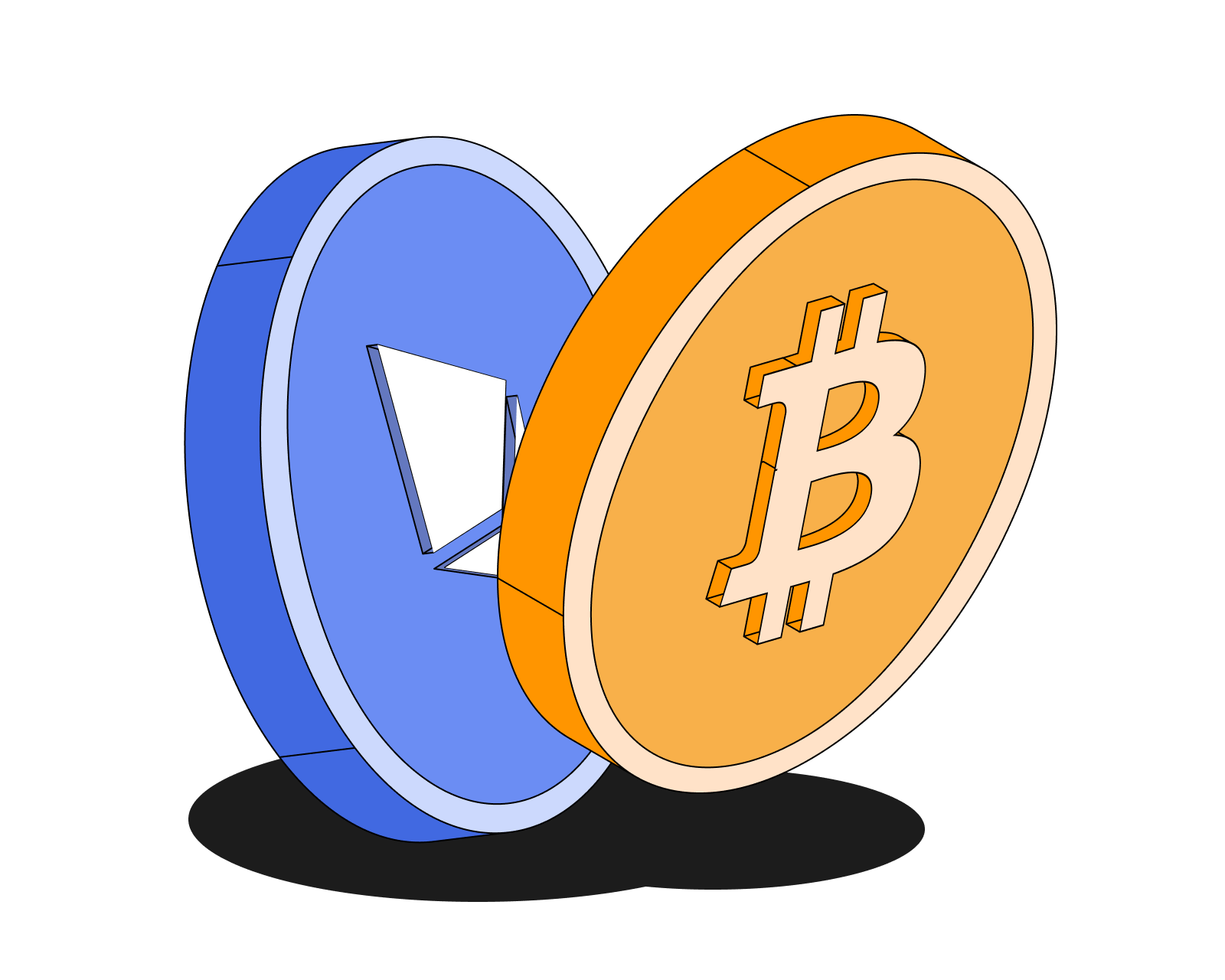What are Bitcoin Ordinals?

Table of Contents
What are Bitcoin Ordinals?
In simple terms, Bitcoin Ordinals are digital collectibles created by inscribing content like art or media onto individual satoshis on the Bitcoin blockchain. Each inscribed sat is one-of-a-kind and can be owned, collected, and traded like a non-fungible token (NFT).
Technically speaking, ordinals are a system for assigning a unique number to each individual satoshi (sat), which is the smallest unit of Bitcoin, equivalent to 0.00000001 BTC. This numbering system enables identifying and tracking specific sats. Once you can identify and track specific sats, you can "inscribe" data like images, videos, or text onto individual sats. The inscribed data becomes a unique digital artifact tied to that specific sat.
Bitcoin Ordinals are based on "Ordinal Theory", which proposed a methodology to give individual identities to sats and enable tracking their ownership and transfer on the Bitcoin network.
What is Bitcoin Ordinal theory?
The concept of Bitcoin Ordinals was introduced by programmer and artist Casey Rodarmor in something he called, “Ordinal Theory.” Ordinal Theory proposes a logical ordering system to assign unique "ordinal" numbers to individual satoshis based on the order they were created on the blockchain. This gives each satoshi an individual identity.
The key idea is that by numbering satoshis, users can "inscribe" arbitrary data like images, videos, etc. onto specific satoshis by attaching this data to their ordinal numbers. This inscribed data effectively becomes a unique digital artifact or NFT on the Bitcoin blockchain.
Casey Rodarmor first published the Ordinal Theory whitepaper in January 2023, outlining the technical details. He then launched the Ordinals protocol on Bitcoin's mainnet on January 21, 2023, minting the first-ever Ordinal inscription.
The launch was enabled by previous Bitcoin upgrades like Segwit in 2017 and Taproot in 2021, which increased the block size and capacity to store arbitrary data on-chain. This paved the way for inscribing larger data payloads like images directly into Bitcoin transactions.
How do Bitcoin Ordinals work?
Bitcoin Ordinals work by embedding additional data within Bitcoin transactions. This data includes the ordinal number, which is a unique identifier assigned to each satoshi. An ordinal number is assigned to a satoshi based on the order they were mined on the Bitcoin blockchain. For example, the first satoshi ever mined is assigned ordinal #1, the second satoshi is #2, and so on. This numbering system allows each satoshi to be uniquely tracked and transferred, making them non-fungible (distinguishable between one another).
Once satoshis are numbered, users can inscribe data such as images, videos, text, etc., onto specific satoshis by attaching this data to their assigned ordinal numbers within a Bitcoin transaction. The inscribed data becomes a unique digital artifact or NFT tied to that particular numbered satoshi on the Bitcoin blockchain.
The technical process of inscription involves several steps:
- Data Preparation: The data to be inscribed is converted into hexadecimal format, interpretable as a Taproot script.
- Taproot Script Creation: The hexadecimal data is wrapped into a Taproot script, which is a type of smart contract executable on the Bitcoin blockchain. Taproot scripts allow for complex conditions and operations.
- Transaction Creation: Two transactions are created:
- Commit Transaction: This transaction contains a hash reference to the Taproot script (without revealing the full script) and creates a Taproot output whose spending conditions are defined by the script.
- Reveal Transaction: This transaction spends the output of the commit transaction by revealing the entire Taproot script, effectively inscribing the data onto the satoshi.
- Broadcasting Transactions: The commit and reveal transactions are broadcasted to the Bitcoin network's mempool, awaiting confirmation from Bitcoin miners.
- Mining and Confirmation: Once the transactions are mined and included in a block, the inscription becomes a permanent part of the Bitcoin blockchain, and the inscribed satoshi is now considered an Ordinal.
Key enablers for this process are Segwit (Segregated Witness) and Taproot. Introduced in 2017, Segwit increased the block size limit from 1MB to 4MB and separated signature data from the transaction data, allowing more transactions per block and discounting the weight of witness data for fee calculation. Activated in 2021, Taproot removed the size limit on witness data, enabling more complex scripts to be included in transactions and introduced new scripting capabilities like Schnorr signatures and Merkle tree abstractions.
How do Bitcoin Ordinals Compare to NFTs on Ethereum?
Similarities
- Uniqueness: Both Bitcoin Ordinals and Ethereum NFTs are designed to represent unique digital assets, ensuring that each token is distinct and non-interchangeable.
- Traceability: Both systems provide transparent histories of ownership and transactions, allowing users to track the provenance and transfer of each unique digital asset on their respective blockchains.
- Metadata: Both Bitcoin Ordinals and Ethereum NFTs can have associated metadata. This metadata enhances their utility and value by providing additional information about the digital asset, such as descriptions, attributes, and links to off-chain data.
Differences
- Complexity: Creating and managing NFTs on Ethereum is more straightforward due to the blockchain's built-in support for smart contracts and a well-developed ecosystem of tools and platforms. Bitcoin Ordinals, on the other hand, operate directly on the base Bitcoin protocol and involve a more complex process of inscribing data onto satoshis.
- Storage Method: Bitcoin Ordinal data (such as images or videos) is inscribed directly onto individual satoshis and stored permanently on the Bitcoin blockchain. This ensures the data is immutable and fully decentralized. Ethereum NFTs typically store a reference or metadata on-chain, while the actual asset data is usually hosted off-chain, on decentralized storage systems like IPFS or on centralized servers. This approach reduces on-chain storage requirements but relies on external data storage solutions.
- Smart Contract Capabilities: Ordinals operate directly on the Bitcoin protocol without additional smart-contract layers. This method lacks the programmability and flexibility of smart contracts, limiting the ability to implement features like royalties or on-chain metadata updates, and integration with Decentralized Finance (DeFi) protocols.
What are the positives of Bitcoin Ordinals?
-
On-Chain Data Storage: Unlike traditional NFTs that store data off-chain, Ordinals inscribe data directly and permanently onto the Bitcoin blockchain, ensuring greater immutability and reducing reliance on external links or storage.
-
Security: Leveraging the Bitcoin network's robust security model ensures that Ordinals are secure and resistant to tampering.
-
Compatibility with Bitcoin Infrastructure: Ordinals are more easily compatible with existing Bitcoin wallets, exchanges, and infrastructure, making them easier to manage and trade, ensuring liquidity.
-
Innovation: The development of Ordinals encourages innovation within the Bitcoin ecosystem, potentially leading to new applications and use cases.
What are the negatives of Bitcoin Ordinals?
-
Scalability Issues: Bitcoin’s blockchain is not optimized for high-frequency transactions, which could limit the scalability of Ordinals. Increased interest and adoption of Ordinals could lead to congestion on the Bitcoin network, potentially increasing transaction fees and processing times.
-
Size Limitations: The Bitcoin blockchain has size limitations, restricting the amount and complexity of data that can be inscribed as Ordinals, potentially limiting their use cases.
-
Simple Functionality: Unlike Ethereum NFTs, Ordinals do not support smart contracts, constraining their functionality in areas like automatic royalty payments or advanced interactions.
-
Environmental Concerns: Like all Bitcoin transactions, creating and trading Ordinals requires energy-intensive mining, contributing to the environmental impact associated with proof-of-work blockchains.
-
High Costs: The process of minting and transferring Bitcoin Ordinal NFTs can be costly due to the transaction fees associated with the Bitcoin network, making them inaccessible to some users.
Related guides
Start from here →
How do bitcoin transactions work?
Understand how the Bitcoin public blockchain tracks ownership over time. Get clarity on key terms like public & private keys, transaction inputs & outputs, confirmation times, and more.
Read this article →
How do bitcoin transactions work?
Understand how the Bitcoin public blockchain tracks ownership over time. Get clarity on key terms like public & private keys, transaction inputs & outputs, confirmation times, and more.

What are NFTs?
Learn about NFTs, how they work, examples of prominent NFTs, and much more.
Read this article →
What are NFTs?
Learn about NFTs, how they work, examples of prominent NFTs, and much more.

What is the difference between Bitcoin and Ethereum?
Find out about the key differences between two of the most popular cryptocurrencies.
Read this article →
What is the difference between Bitcoin and Ethereum?
Find out about the key differences between two of the most popular cryptocurrencies.
STAY AHEAD IN CRYPTO
Stay ahead in crypto with our weekly newsletter delivering the insights that matter most
Weekly crypto news, curated for you
Actionable insights and educational tips
Updates on products fueling economic freedom
No spam. Unsubscribe anytime.



Start investing safely with the Bitcoin.com Wallet
Over wallets created so far
Everything you need to buy, sell, trade, and invest your Bitcoin and cryptocurrency securely

© 2025 Saint Bitts LLC Bitcoin.com. All rights reserved


